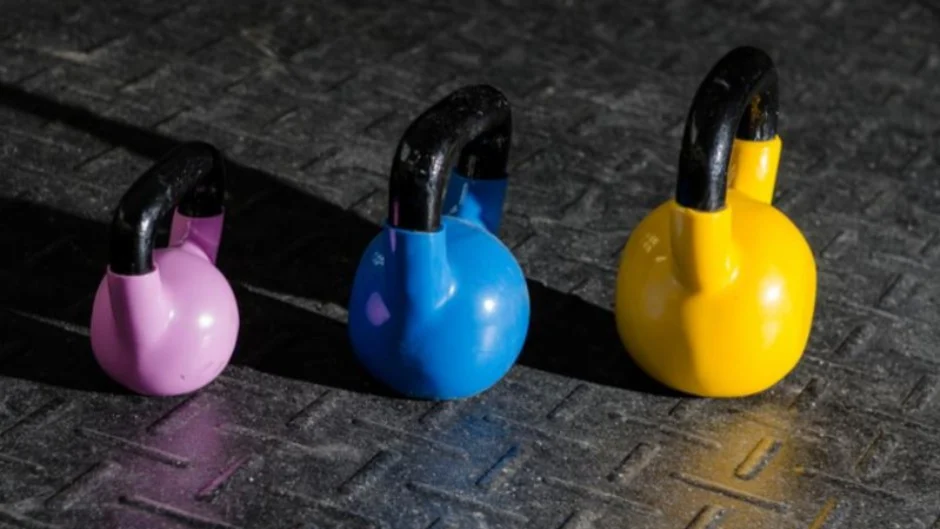5 Partner Exercises You Can Do With Your Kids

Exercise is more fun with a buddy, and there is no reason why kids can’t join in. In fact, working out with your child is a great way to set an example about the importance of physical activity and makes for great bonding time. Group exercise instructor Jamie Bartholoma shares her favorite partner exercises.
Partner Planks
- Both you and your child come into a plank position with your fingertips facing each other, leaving about one foot of space in between partners.
- Using opposite hands, high-five each other, being mindful to not let your hips rock to the side. Your chest and belly button should be pointing at the floor at every point of this movement.
- Do 10 high-fives on each side.
Modifications:
Harder: Increase the intensity by adding a pushup in between high fiving.
Easier: If you have sensitive wrists, modify holding your plank on your forearms.
Partner Sit-Ups
- Sit on your tailbone facing your child, interlocking your ankles for stability and keeping your heels on the floor.
- Place your hands across your chest, rolling your shoulder blades down and back. Tuck your chin to your chest, lengthening out the back of your spine.
- Lower yourself to the floor one vertebrae at a time until your shoulder blades touch the floor.
- Lift yourself back to the upright start position without curling your shoulders forward.
- Do 20 repetitions.
Modifications:
Harder: Instead of interlocking your ankles for stability, elevate your feet and press the soles of your sneakers together, keeping your knees bent at a 90-degree angle. Push against each other as you lower and lift yourself through the sit-up.
Easier: If you don’t have a lot of range of motion in your spine, aim for a half sit-up. Lie on your mat with your arms at your sides. Lift your chest, reaching toward your ankle until you and your child can high-five. Keep your chest raised, and alternate sides.
Partner Leg Lowers
- Start with your child lying on the ground with his or her legs extended on the floor. His or her arms can either be at the sides or holding on to the parent’s ankles for stability.
- The parent stands just behind the child’s head with his or her feet shoulder-width apart, making an L-shape with the child on the floor.
- The child holds the parent’s ankles and lifts his or her legs to the parent’s hands.
- The parent pushes the child’s legs toward the ground, and the child tries to not let his or her legs touch the floor (it’s like lava).
- Do 20 repetitions, then switch roles.
Modifications:
Harder: Alternate between sending the active partner’s legs to the right and left instead of the center, paying close attention to maintain a flat neutral spine throughout.
Easier: Instead of lifting both legs together, alternate between right and left to decrease intensity.
Static Squats with Stability Challenge
- You and your child drop into a squat facing each other at an arms-length distance apart. Your feet should be shoulder-width apart with toes pointing forward.
- Both you and your child bring your hands together in front of your chests. Press your palms together, drawing your shoulder blades back as you do so, opening your chest and lifting your abs to support your spine and establish your stability.
- Without losing your posture, extend your pressed palms out in a straight line with your fingertips pointing forward, until you and your partner’s hands are back to back, arms relatively straight.
- Your goal from here is to press your hands into your child’s hands until one of you is forced to reestablish your balance. Think of it like arm wrestling but take away the table and add a squat.
- Alternate so each partner has a chance to press from the right and left side. Try for 30-second sets on each side with 10-second recovery in between. As you advance, you can increase the time to 60 seconds.
Modifications:
Harder: Instead of having both hands pressed together meeting in the middle, each partner alternates between pressing his or her right and left hands together in the middle. your free arm can be at your side, bent behind your head like in a sit up, whatever feels natural.
Easier: If you need more room for your hips to lower into a squat, widen your stance a few inches and try to turn out from your hips so your knees and toes are pointing out in a sumo or plie squat position.
Squat to Overhead High-Five
- Come into a squat position facing your child, who is also in a squat, about arms-distance apart.
- At the same time, press your heels into the ground, straightening your legs and pressing your hips forward by squeezing your glutes.
- At the top, extend your arms overhead, meeting your child’s hands in a high-five, being mindful not to lift your shoulders as you do so.
Modifications:
Harder: Make the movement explosive by turning your squat into a jump squat, clapping hands overhead with your partner while your feet are off the ground. Make sure to land softly, bending your knees to help absorb the impact.
Easier: Press your hands forward from your chest to meet your partners high five.
You may also like:


